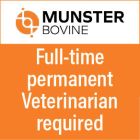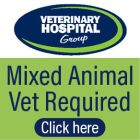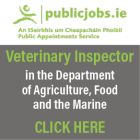Focus - Herd health - March 2020
Assessment of oral supplementation in trace elements on gestating cows with mange mites
The aim of this study, conducted at the Univerity of Liège, is to assess the efficacy of the bolus galenic to supply trace element needs of gestating Belgian Blue with scabies
Intensive use of fertilisers lacking in micronutrients associated with animals’ increasing productivity led to trace element (TE) deficiencies in cattle during the past decades, especially in herds with pathologies (Guyot et al, 2009). Bovine mange decreases performances and led to economic losses, especially in the Belgian Blue breed (Coussé et al, 2014). Moreover, copper (Cu), iodine (I), selenium (Se) and zinc (Zn) play essential roles in skin immunological defences (Rink & Gabriel, 2000; Enjalbert 2006; Meschy, 2010), especially during late gestation when dams supplementation is essential to ensure quality colostrum (Awadeh et al, 1998) and future calf health (Enjalbert, 2008). As part of a rational use of common acaricide molecules, the aim of this study is to assess the efficacy of the bolus galenic to supply TE needs of gestating Belgian Blue with scabies.
Material and methods
This field study included 273 pregnant cows (mean age =3.7 ±1.3 years) initially healthy (H) or with mange (M), randomly and homogeneously divided in two groups: placebo (P) and bolus (B).
Every six weeks, all animals were individually checked for mange (lesion intensity and percentage of body surface affected). See Figures 1 and 2. Blood analyses were performed on representative sample (N total = 88 animals) from both groups to measure plasmatic level in TE and assess inflammatory status (haptoglobin, Bovi-Y-Test, total seric and plasmatic proteins). Skin scrapings were performed on animals with mange. Statistical analysis was performed using a linear mixed model (SAS – GLIMMIX).
Results
Mange
Main etiological agent was Psoroptes ovis, followed by Chorioptes bovis. Proportion of M animals was comparable in both groups at T1 (71% in group P/67% in group B) and T3 (68% in group P/69% in group B) but not at T2 (87% in group P/77% in group B).
At T2 and T3, the lesion score (LS) was significantly lower in bolus group (p<0.05). Regarding the percentage of body surface area affected, there was no significant difference between groups (p>0.1).
Plasmatic TE
At T1, there was no significant difference regarding plasmatic TE (p>0.1). All times mixed, there was a better TE status for cobalt (Co [p<0.0001]), Se (p<0.005) and Zn (p<0.05) in bolus group. After six weeks, plasmatic Se was over the deficiency limit in group B only. In both groups and all times mixed, plasmatic Zn remained below the limit. Plasmatic Cu was below the limit in both groups during the whole study but at T2, there was an increase in group B, compared with T1 (p<0.05). Limits and results are summarised in Tables 1 and 3.
Inflammation
At T1, there was no significant difference between groups regarding inflammation status (p>0.1). All times mixed, serum haptoglobin was lower in bolus group (p<0.0001). An increase of serum haptoglobin was observed at T2 in control group only, and at T3 in both groups. Haptoglobin increase was less important in bolus group where 4% of animals presented inflammation versus 14% in control group. Regarding Bovi-Y-Test, total serum and plasmatic protein, there was no significant difference between groups (p>0.1). Limits and results are summarised in Tables 2 and 3.
Discussion
In vitro bolus duration of action is 90 days, which is the average time to recover from a Se deficiency in cattle after an oral supplementation (Guyot et al, 2007b) and to ensure an effective transfer of TE from dam to foetus (Guyot et al, 2011a). So,selected animals were in late gestation, even if the main limit of this strategy is that TE blood concentrations during periparturient period are difficult to interpret due to transfer from dam to fetus (Gooneratne et al, 1989;Kincaid and Hodgson, 1989; Van Saun et al, 1989; Abdelraham et al, 1995).
Inflammation can lead to a decrease of plasmatic Zn due to tissue sequestration (Milanino et al, 1986; Oliva et al, 1987; Janosi et al, 1998), so low plasmatic Zn in both groups could be due to the high incidence of mange in herds.
To assess I release by the bolus and understand its kinetic, blood and urine sampling should have been performed weekly. Indeed, it has been described that iodine reaches basal levels within 15 days after cessation of supplementation (Guyot et al, 2009b). Moreover, in a case of I overdose, thyroid hormone levels are reduced (Wolff and Chaikoff, 1948), so monitoring triiodothyronine (T3) and thyroxine (T4) would have been relevant, weekly and at the same time, to limit the circadian effect (Bitman et al, 1994; Guyot et al, 2007a).
Animals supplemented with Se have lower serum haptoglobin after calving by C-section (Guyot et al, 2017). At T2, when most of the cows had already calved, 14% of control group had high haptoglobin (>0,31 mg/mL) against only 4% of bolus group. To assess if bolus could help decrease post-surgery inflammation, haptoglobin should have been measured immediately after C-section and 15 days later. Finally, Bovi-Y-Test is more relevant in case of severe chronic inflammation, such as endocarditis or traumatic reticuloperitonitis (Metzner et al, 2007); so even if some animals were severely affected by bone marrow derived macrophages (BMM), it is not appropriate to evaluate chronic skin lesions.
Conclusion
This study revealed that during late gestation, bolus supplementation allows to supply Belgian Blue pregnant adults during at least six weeks in Se and Co, even with outbreaks of mange mite. Plasmatic concentrations for those two TE decreased three months after bolus administration, which confirms duration of action, measured in vitro. Mange lesions and inflammation were significantly less important in animals receiving the bolus that may enhance treatment efficacy, which is very encouraging to optimise treatments and promote a preventive approach in cattle.
Authors
G. Cheleux,1 F. Rollin,1 JP Wajda-Dubos,2 L. Chery,2 S. Limousin,2 P. Dubreucq,1 A. Usoz,1 F. Farnir,1 H. Guyot.1
1: University of Liège, Faculty of veterinary medicine, 7D avenue de Cureghem quartier Vallée 2, 4000 Liège (Belgium).
2: Vetalis 10 avenue d’Angoulême 16100 Chateaubernard (France).













